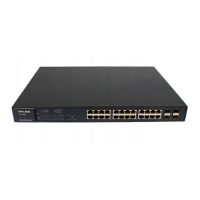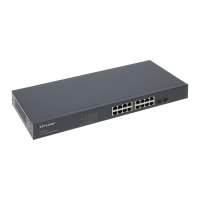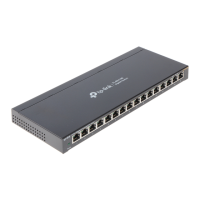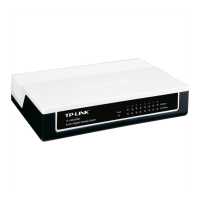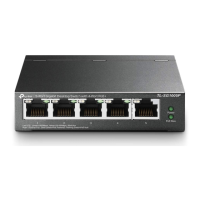User Guide 215
Configuring Layer 2 Multicast IGMP Snooping Configuration
Fast Leave Enable or disable Fast Leave for the VLAN. IGMPv1 does not support Fast Leave.
Without Fast Leave, after a receiver sends an IGMP leave message to leave a
multicast group, the switch will forward the leave message to the Layer 3 device
(the querier).
From the point of view of the querier, the port connecting to the switch is a
member port of the corresponding multicast group. After receiving the leave
message from the switch, the querier will send out a configured number (Last
Member Query Count) of group-specific queries on that port with a configured
interval (Last Member Query Interval), and wait for IGMP group membership
reports. If there are other receivers connecting to the switch, they will response
to the queries before the Last Member Query Interval expires. If no reports are
received after the response time of the last query expires, the querier will remove
the port from the forwarding list of the corresponding multicast group.
That is, if there are other receivers connecting to the switch, the one sent leave
message have to wait until the port ages out from the switch’s forwarding list of
the corresponding multicast group (the maximum waiting time is decided by the
Member Port Aging Time).
With Fast Leave enabled on a VLAN, the switch will remove the (Multicast Group,
Port, VLAN) entry from the multicast forwarding table before forwarding the leave
message to the querier. This helps to reduce bandwidth waste since the switch
no longer sends the corresponding multicast streams to the VLAN of the port as
soon as the port receives a leave message from the VLAN.
Report
Suppression
Enable or disable Report Suppression for the VLAN.
When enabled, the switch will only forward the first IGMP report message for
each multicast group to the IGMP querier and suppress subsequent IGMP report
messages for the same multicast group during one query interval. This feature
prevents duplicate report messages from being sent to the IGMP querier.
Member Port
Aging Time
Specify the aging time of the member ports in the VLAN.
Once the switch receives an IGMP membership report message from a port,
the switch adds this port to the member port list of the corresponding multicast
group. Member ports that are learned in this way are called dynamic member
ports.
If the switch does not receive any IGMP membership report messages for a
specific multicast group from a dynamic member port, it will no longer consider
this port as a member port of this multicast group and delete it from the multicast
forwarding table.
Router Port
Aging Time
Specify the aging time of the router ports in the VLAN.
Once the switch receives an IGMP general query message from a port, the switch
adds this port to the router port list. Router ports that are learned in this way are
called dynamic router ports.
If the switch does not receive any IGMP general query message from a dynamic
router port within the router port aging time, the switch will no longer consider this
port as a router port and delete it from the router port list.

